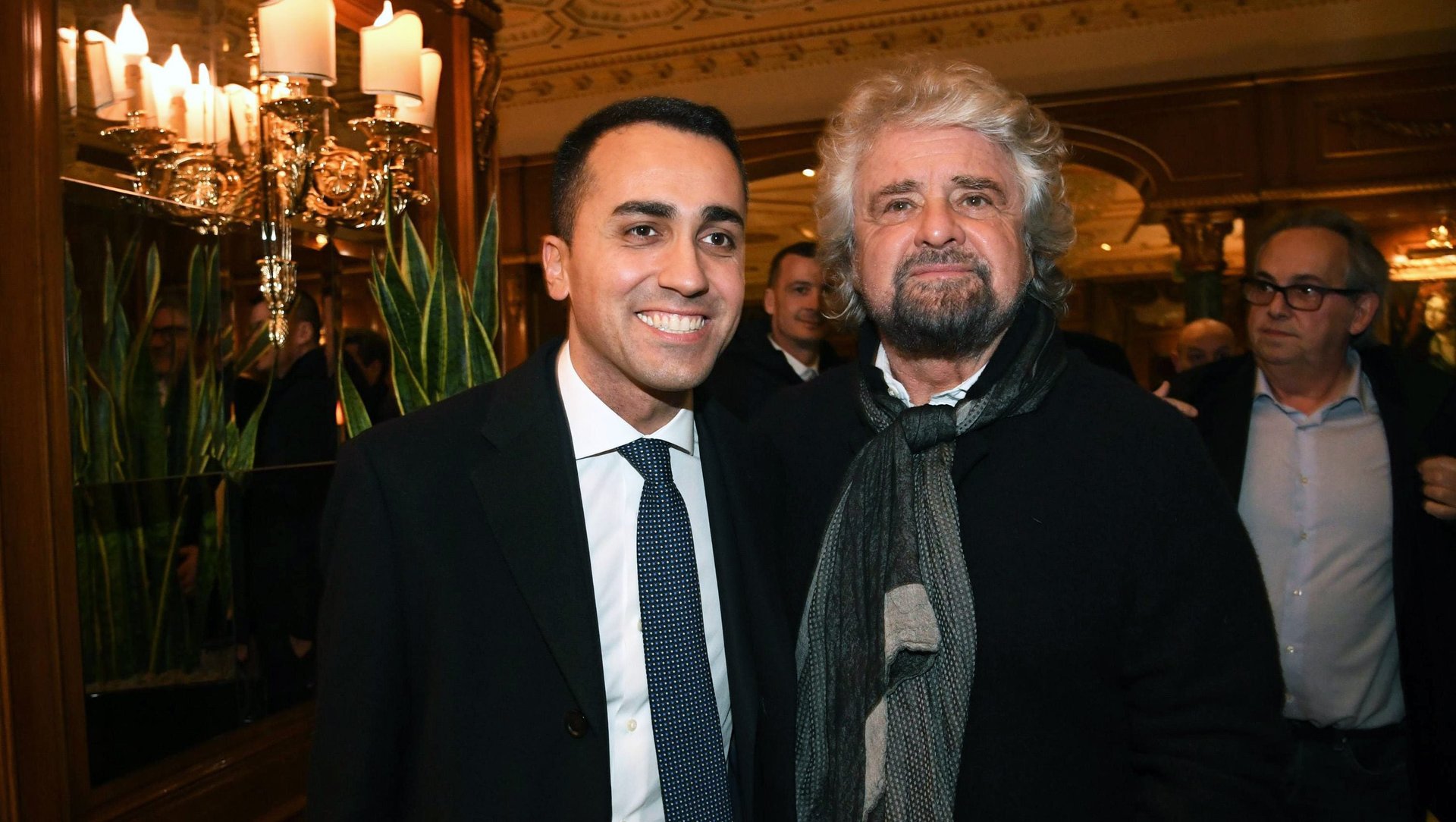Revolution at the polls: How Italy made Steve Bannon’s “ultimate dream” come true
Steve Bannon’s ”ultimate dream” came true last night in Italy: Anti-establishmentarianism, isolationism, xenophobia and populism won the country’s general elections on March 4.


Steve Bannon’s ”ultimate dream” came true last night in Italy: Anti-establishmentarianism, isolationism, xenophobia and populism won the country’s general elections on March 4.
On March 4, populist party Movimento Cinque Stelle (Five Star Movement) won the most votes. Meanwhile, radically xenophobic Lega Nord (Northern League) overtook center-right party Forza Italia. More than half of the parliament is now in the hands of upstart populist groups, with moderates both left and right of center crippled: The center-left Democratic Party received less than 19% of votes—the worst result in its history. Center-right Forza Italia received around 14% of the votes—the worst in leader Silvio Berlusconi’s political history.
No single party won enough votes to control the government, which means some combination of groups will have to form a coalition. And whoever’s in charge will face a changed Italy, in which voters appear to have swung a hard right.
As Bannon, former Trump advisor and longtime admirer of proto-fascist thinker Julius Evola, knows, Italy is an excellent incubator for conservative trends that eventually spread throughout the world.
Italy is the birthplace of fascism. It launched the first reality television leader, prime minister Silvio Berlusconi, onto the world stage, followed by the comedian-founded Five Star Movement in 2013. The Northern League pioneered Europe’s anti-immigration rhetoric, initially targeted at southern Italians. And over the past decade, neo-fascism has crept back into Italian politics.
Italy’s longtime social and economic problems have given its citizens a fascination with quick, dramatic fixes. Although it is the fourth largest European country by economy and population, Italy suffers dramatic unemployment and public debt. It has potential to prosper, but suffers from centuries of social immobility that no new political wave has truly been able to eradicate.
Today, the area south of Rome is home to one of Europe’s largest poor populations, with half the growth of Greece in the 2010s, and peaks of youth unemployment above 57%. General unemployment is over 17% in five southern regions. It’s “the largest and most populous backward territory of the Euro zone,” pointed out Mario Draghi, Italian president of the European Central Bank, nearly a decade ago.
Young people in the US and Europe are looking anxiously to a precarious future, but Italian millennials are already living it. Many voters in their mid- or late-thirties, known as “the lost generation,” have never had the opportunity to build a career. They know they won’t fully profit from any current improvements, and that their younger peers are emigrating to escape the same fate: As of 2017, 39% of the citizens who left Italy to live abroad were between 18 and 34.
Sure, after a long recession, Italy has finally been growing again under the centrist coalition led by the Democratic Party under Matteo Renzi and Paolo Gentiloni—but real progress has been dishearteningly slow.
In the 1920s, fascist leader Benito Mussolini rose to power promising to revive the past splendor of ancient Rome. In the 1990s, Berlusconi promised to replace a corrupt bureaucracy with glamor and wealth (only to usher in more corruption, in fact). In this week’s general elections, Italian voters sought out another instant solution: A fierce new populism that rallies citizens against external threats, and rejects the political status quo. Voters for the Northern League threw their support behind insularity, while voters for the Five Star Movement embraced a government that promised literal handouts and vague systemic change.
The key to understanding Italy’s political landscape may lie in a passage of Il Gattopardo (The Leopard), a 1950s novel by Giuseppe Tomasi di Lampedusa, that Italian political analysts love to quote. In it, an aristocratic character proclaims, “Se vogliamo che tutto rimanga come è, bisogna che tutto cambi” (“if we want everything to stay the same, we need everything to change”). The quote conveys his understanding that throwing the status quo up in the air ends up replicating the exact same power dynamics that were wished gone—and that those who seek to keep power had better make a good show of overthrowing it.
Through every political overhaul since Italy’s unification, corruption, nepotism and unkept promises have characterized its government. There’s little reason to think that will change. Five Star leader Luigi Di Maio recently proposed a ruling cabinet that would include several professors from Rome’s Link Campus University. That private university is affiliated with both Five Star and the old, opaque Christian Democrat party which once ruled Italy for decades. The university’s president, Enzo Scotti, 84, is no visionary but a former minister of the interior, nicknamed Tarzan for his ability to swing from a political position to the other, following the wind.
Faced with a long history of Italy’s entrenched ills—the inability to sustain merit-based social progress, to get the southern regions out of poverty, to resist organized crime—ordinary Italians want drastic solutions, rather than incremental reform. But Italy has never had an actual popular revolution; while political systems may be routinely overthrown at the polls (Mussolini, remember, was elected), the elite keep coming back in new disguises.